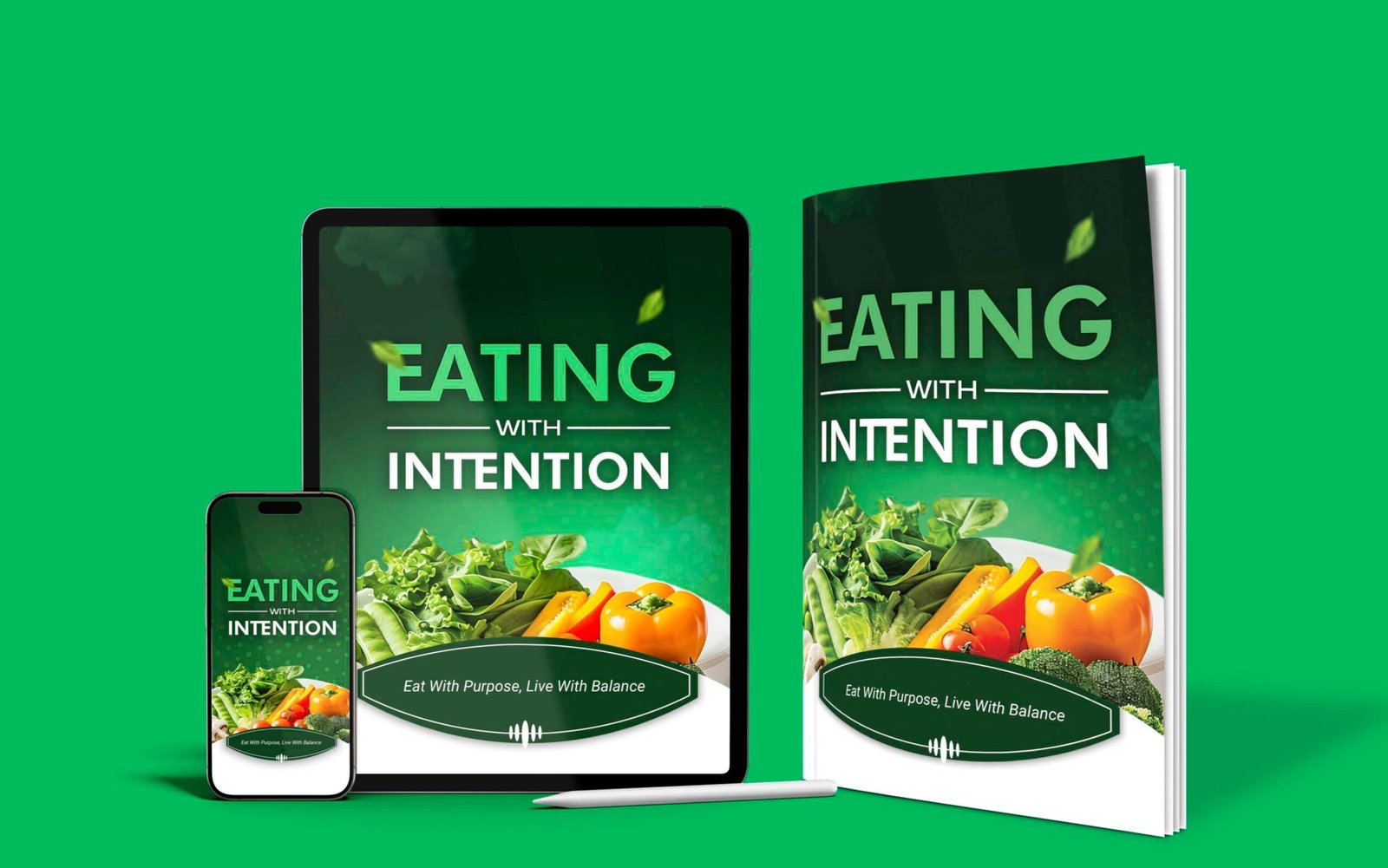![]()
![]()

What comes to mind when you first hear the word “diet?” Maybe it is following a meal plan or set of food rules or being told what to eat, when to eat, why to eat and how much to eat; or perhaps it is something you do with only one goal in mind – weight loss.
While it’s no secret that diets often don’t last long, many don’t realize the significant impact that diets can have on your relationship with food, even years after breaking the dieting cycle. The good news is you don’t have to be stuck in the diet mentality forever. In fact, there are many ways to improve your relationship with food for the long haul.
Eating with intention means making conscious, thoughtful choices about what you eat, why you eat, and how you eat. It is the practice of tuning into your body’s signals rather than relying on external rules or emotional impulses.
Instead of asking, “What should I eat?” you begin to ask:
Am I actually hungry right now?
What type of food would support how I want to feel today?
Am I eating for nourishment, or am I responding to boredom or stress?
When you eat with intention, you bring awareness to the table. You taste your food. You chew more slowly. You notice your level of fullness and satisfaction. And over time, you learn how to nourish your body in ways that feel balanced, joyful, and sustainable.
You may or may not have heard of the terms “mindful eating” and “intuitive eating.” Oftentimes, these concepts are used interchangeably, but there are a few key differences between the two. The biggest is that mindful eating is a principle of intuitive eating. Intuitive eating is a much broader term that includes a list of principles that can improve your relationship with food
You likely put a lot of effort into planning your meals, which hopefully results in a balanced plate. However, if you aren’t putting the same effort into your snacks, then you could be missing out on needed nutrition or possibly eating too much of one food group, while consuming not enough of another. Likewise, if you’re skipping snacks altogether or if they’re imbalanced, you are likely to be left hungry, which brings us to our next tip.
If hunger comes on quickly, is for something specific like “crunchy” or “salty”, and doesn’t seem to go away even after eating, then it’s likely emotional hunger. This doesn’t need to be responded to with food. Physical hunger, on the other hand, begins in the stomach, grows slowly, and is a general desire for food. Honoring this true hunger with intention means responding with a balanced meal or snack that fits within your day.
One way to ensure you’re eating with intention is to keep an accurate, detailed food log throughout the day. This helpful reflection of your food choices provides the honest feedback you need when trying to meet your daily nutrient needs and is very effective for helping you to respond to physical hunger.
It may seem strange to include smart grocery shopping among tips for eating with intention, but it makes a lot of sense when you consider that if your shopping cart isn’t purposefully filled with nutrient dense foods, then your kitchen won’t be. Whether it’s for beverages, snacks, or the building blocks to balanced meals, shopping with Guiding Stars will save you time in the supermarket so that you have more of it available for my next tip.
Simply slowing down is one of the best ways to eat with intention. This applies to the energy you bring to a meal or snack, as well as the pace in which you consume it. If you are rushing, you are unlikely to be able to recall how much you ate or maybe even what a food really tasted like. Eating with intention means slowing down to savor your food, which increases the likelihood that you’re responding to physical hunger. It also helps you remember what you ate so that you can log it correctly. Think of this last tip as the key to intentional eating.

Eating with intention has a powerful ripple effect. This approach has been shown to support both physical and emotional well-being. Here’s what happens when you begin to eat more mindfully and purposefully.
1. Improved Digestion
When you slow down and chew your food properly, your body has more time to activate digestive enzymes. This reduces bloating, gas, and indigestion and allows your system to absorb nutrients more efficiently.
2. Healthier Food Choices
Eating with intention naturally leads you to choose foods that align with how you want to feel. Instead of following food rules, you build internal trust. You begin craving energy, not escape.
3. Better Portion Control
Mindful, intentional eating helps you recognize when you’re satisfied. You learn to stop eating when you’re comfortably full, rather than stuffed, which supports natural weight regulation.
4. Emotional Awareness
You begin to see patterns in your emotional eating habits. When you pause before you eat, you may realize you’re reaching for food because you’re lonely, stressed, or tired. That awareness creates space for healthier responses.
5. More Joy at Mealtime
Intentional eating enhances the pleasure of food. You taste more. You enjoy your meals. You reconnect with the joy that eating can bring.
You might be wondering, “What if I’m busy? What if I only have ten minutes to eat?” The truth is, eating with intention is flexible. It’s not about eating slowly every time or having perfect meals. It’s about checking in with yourself, even briefly.
If you’re short on time, you can still eat with intention by doing three things:
Pause before eating and take one conscious breath
Avoid multitasking and stay focused on your food
Notice how your body feels during and after the meal
It’s okay if you forget sometimes. The key is to return to the practice without judgment. Every bite is an opportunity to start fresh.
The intention doesn’t begin at the table , it starts in your grocery store and your kitchen. Planning and preparing meals with mindfulness is part of the process.
Choose foods that you enjoy and that make your body feel good. Buy ingredients that you feel excited to prepare. Involve your senses in cooking: the sound of sizzling onions, the color of fresh produce, the aroma of spices. These moments connect you to the act of nourishment.When cooking becomes intentional, it transforms from a chore into an act of care.
If you’ve struggled with food in the past , whether through dieting, bingeing, emotional eating, or body image issues this practice can be a healing path.
Eating with intention helps you unlearn shame and relearn self-trust. It brings compassion to moments where you might have previously judged yourself. Over time, you realize that food is not your enemy. It is a tool for connection, healing, and joy. The more you eat with presence, the more you remember that your body deserves to be treated with kindness, not control.

In a world of food trends, quick fixes, and endless distractions, eating with intention is a radical act. It calls you to be present. To listen. To honor your body. To enjoy the moment. Whether you’re sitting down to a homemade dinner or grabbing lunch between meetings, you can choose to bring intention to your plate.
